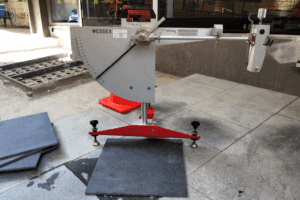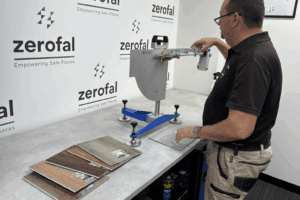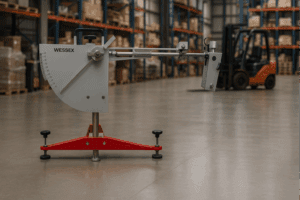One Product, Two Results: How Coatings Can Change Your P-Rating
Coatings Can Change Your P-Rating
A raw tile might test as P4—but once coated or sealed, its slip resistance can drop significantly. AS 4586-2013 requires testing the final treated surface, not just the raw material. If you’re applying a coating, you need to retest and relabel to remain compliant.
Slip ratings aren’t fixed—they reflect the condition of the actual surface tested.
A surface that achieves a P4 rating in its raw form may perform very differently once it’s sealed, polished, or coated. And that difference can shift your product from compliant to non-compliant without anyone noticing—until it’s too late.
Why P-Ratings Change
The wet pendulum test under AS 4586-2013 measures how much grip a surface offers when wet. That grip is heavily influenced by:
- Micro-texture and surface profile
- Coatings, sealers, or polishes applied after manufacture
- Changes to gloss, absorption, or roughness
Even invisible treatments—like a clear anti-slip coating or matte sealer—can alter test results by one or more full classifications.
When Coatings Reduce Slip Resistance
We’ve seen products shift from P4 to P2 after sealing—particularly when the coating increases gloss or reduces surface roughness. That shift could take a compliant bathroom or entry tile and render it unsuitable for wet areas under HB198-2014 guidelines.
When Coatings Improve Performance
Some anti-slip treatments are designed to increase micro-friction. These may improve the P-rating—but only if the treated surface is tested and certified. Applying a coating and assuming it works is not defensible.
Key Compliance Requirement
Under AS 4586:2013, you should test the final, treated surface as supplied or installed.
If you modify the surface after manufacture—whether by coating, sealing, or finishing—you are obligated to:
- Retest the product
- Update the slip classification
- Ensure marketing and certification reflect the treated condition
Failure to do this can invalidate the slip rating and create liability under product compliance laws.
Best Practice for Suppliers and Builders
- Test both coated and uncoated versions if finishes vary
- Label all test results clearly (“as sealed”, “as installed”, etc.)
- Submit the actual installation configuration for certification
- Don’t assume ratings are transferable between finishes
Zerofal provides lab testing under AS 4586-2013 for all finish conditions—sealed, coated, untreated, or otherwise. We help manufacturers and specifiers certify what actually gets installed.
Certify the Surface That Gets Installed
Coated and sealed finishes often behave differently from raw tiles. Zerofal provides AS 4586-2013 lab testing for all finish types, so your certification reflects real-world use.
- Test raw and coated samples side by side
- Certify what actually gets supplied
- Label results correctly for specifiers and auditors
Explore more

Colour, Grit and Surface Finish: How Subtle Differences Change Slip Ratings (AS 4586:2013)
Colour, grit and finish change slip resistance. Learn why P-ratings vary across tile ranges and coatings

Why One Slip Test Isn’t Enough for Product Lines (AS 4586:2013)
Slip resistance varies across colours and finishes. Learn why one AS 4586 test cannot certify an entire product line.

Industrial Slip Resistance: Dust, Boots & Coating Drift (AS 4663:2013)
: Industrial floors change fast. Learn how dust, coatings and machinery reduce slip resistance and why AS 4663 onsite testing is essential.
Stay Ahead of Safety Standards
Join the Zerofal newsletter for actionable insights on slip testing, compliance updates, and smart prevention strategies. No spam – just practical safety advice.
